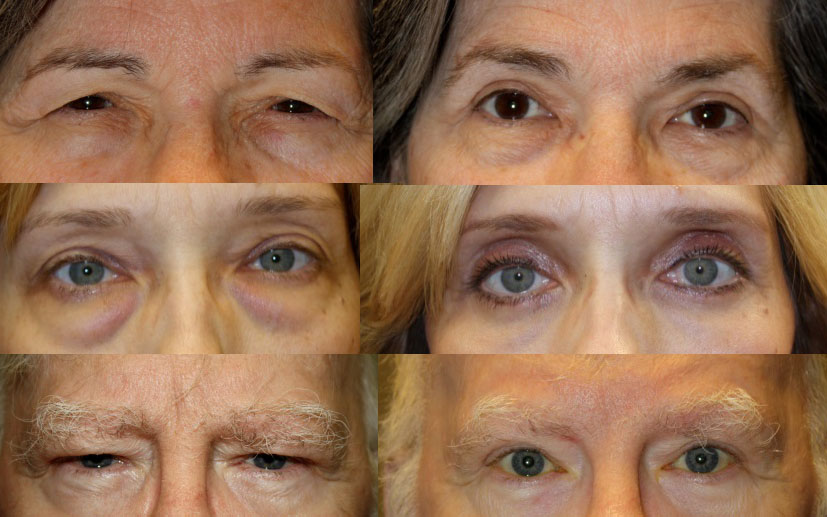Your eyes are often the first things that people notice about you, and are an important aspect of your overall appearance. Young eyelid skin is smooth, but over time, the eyelid skin stretches, the fat bulges, and the muscles weaken. As your eye muscles weaken the skin around the eyelids will start to form bags and will begin sagging. The eyebrows may also droop and sag (a condition called brow ptosis). Age, heredity and sun exposure all contribute to this process.
When severe enough, the upper eyelid skin may hang over the lashes and obstruct peripheral vision. In some cases drooping eyelids become a medical issue and can obstruct vision. In these cases, insurance may cover the cost of the eyelid surgery.
Many eyelid surgery patients, who might not realize their eyelids were obstructing their vision, are amazed how eyelid surgery can open their visual field. As a bonus, eyelid surgery will enhance a more youthful appearance. This can enhance a more youthful look in your face.
If you are concerned about your eyelids, please call our office to arrange a consultation.
Blepharoplasty (Eyelid Surgery)
Droopy eyelids can make you appear older and can also impair vision. Blepharoplasty corrects these problems and also removes puffiness and bags around your eyes that make you look worn and tired. Blepharoplasty removes the excess fat, muscle, and skin from both upper and lower lids. The results can be a rejuvenated appearance, with a younger, firmer eye area.

Whether the surgery is desired for functional or cosmetic reasons, your choice of a qualified surgeon is of great importance. The patient must also make the commitment to follow the pre-surgical and post-operative instructions of the surgeon. During the pre-surgical consultation, you will be examined or asked to answer questions concerning vision, tear production, use of lenses, and your desires for surgery. Your surgeon will explain what you can expect from blepharoplasty and take a complete medical history. Factors to be weighed include age, skin type, ethnic background, and degree of vision obstruction.
Upper Eyelid Surgery
In upper eyelid surgery, the surgeon first marks the individual lines and creases of the lids in order to keep the scars as invisible as possible along these natural folds. The incision is made, and excess fat, muscle, and loose skin are removed. Fine sutures are used to close the incisions, thereby minimizing the visibility of any scar.
After Blepharoplasty
After the surgery ice packs are applied. An ointment to prevent infection is used. A certain degree of swelling and bruising is normal. Cold compresses, as well as head elevation when lying down, will enhance healing and relieve discomfort. Your surgeon will prescribe medication for discomfort. For a week and a half following blepharoplasty, you will clean the eye area (the eyes may feel sticky, dry, and itchy). Eye-drops may be recommended. Your surgeon will also list activities and environments to avoid in the weeks immediately following surgery. Stitches will be removed in 5 to 7 days after surgery.
Does insurance cover eyelid surgery? (Blepharoplasty)
As a general rule, insurance does not cover cosmetic surgery. However, if your eyelids are encroaching upon your field of vision, the procedure may be covered as “medically necessary” surgery. Haik Humble Eye Center can assist you with your insurance benefits for information on the degree of coverage.
